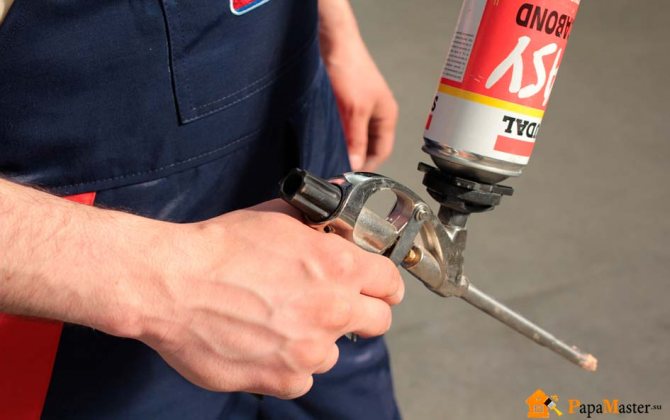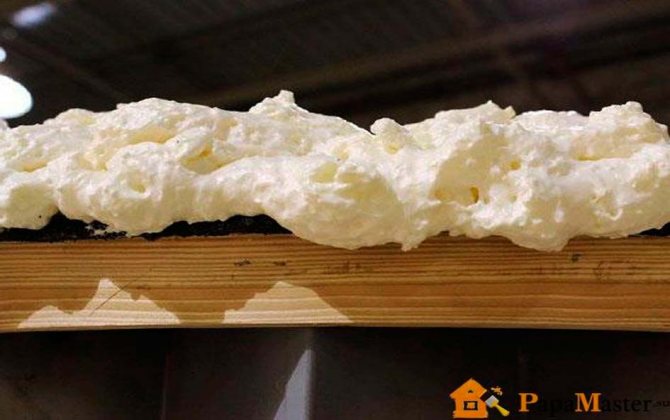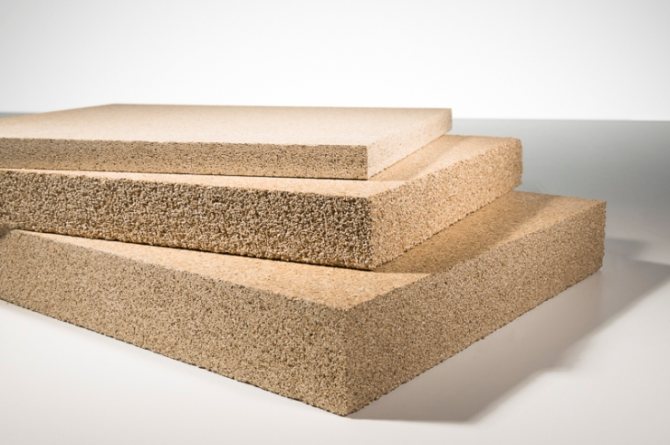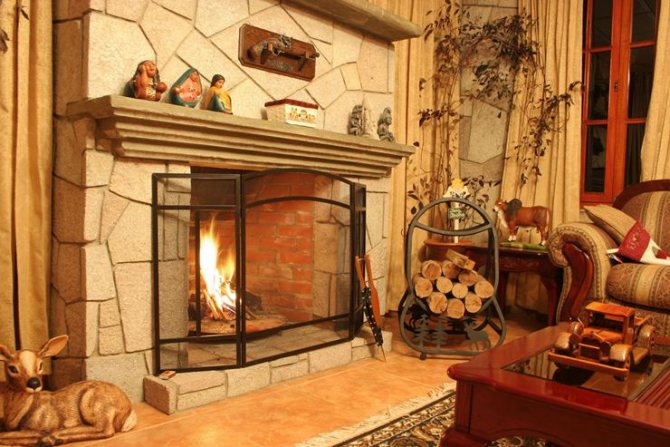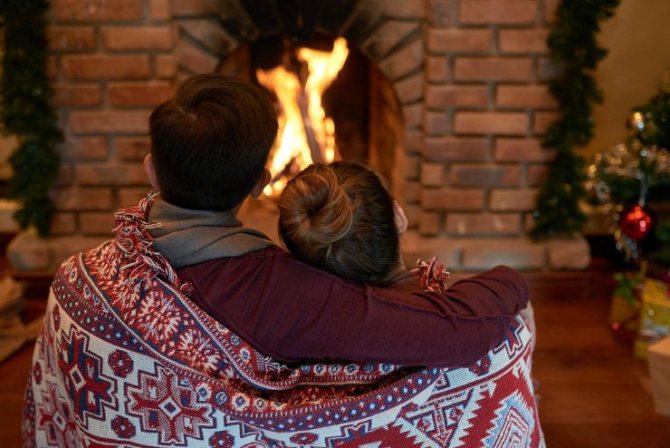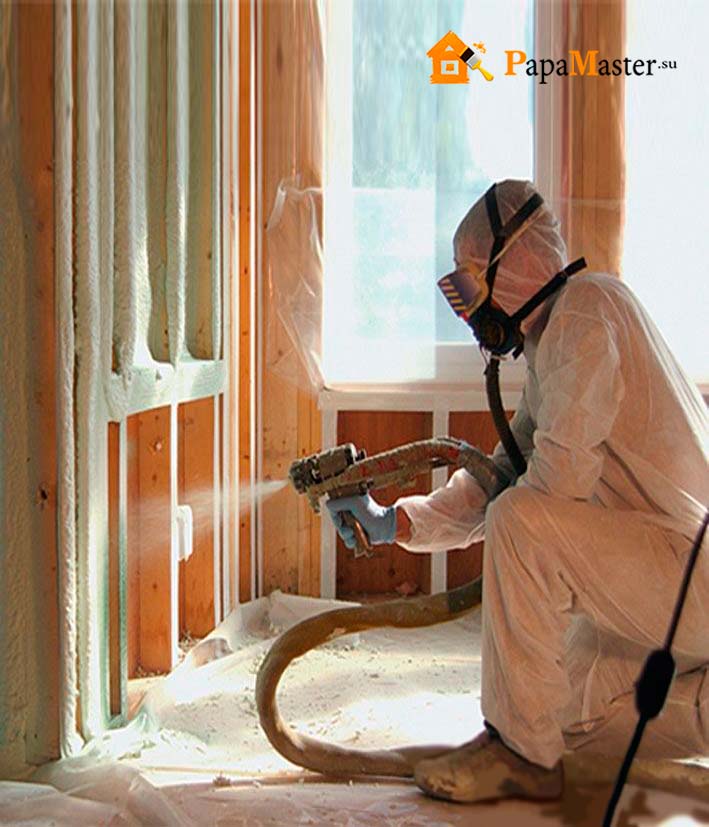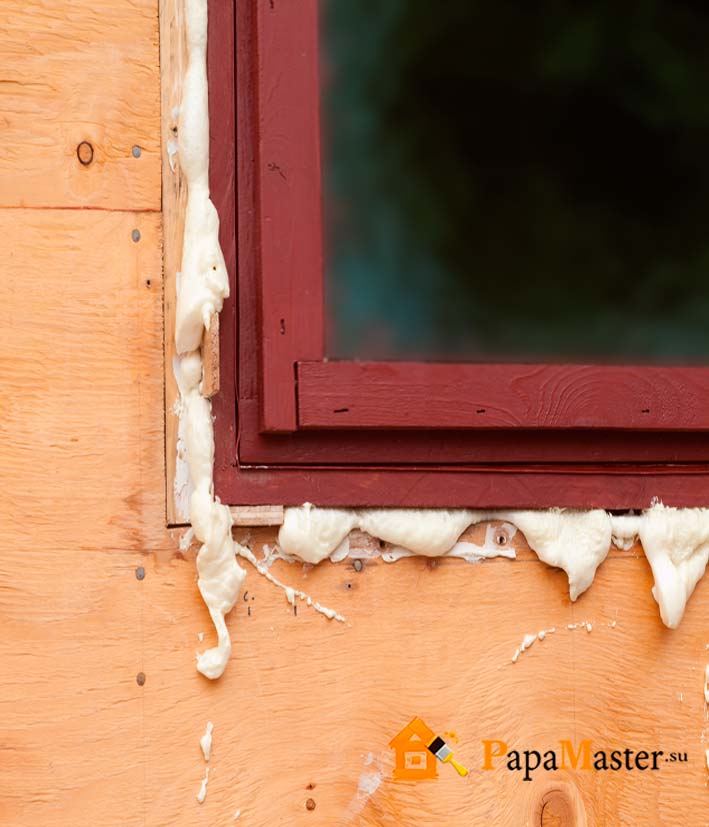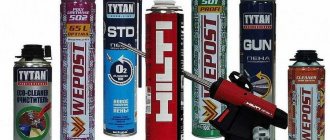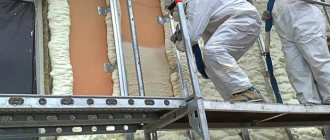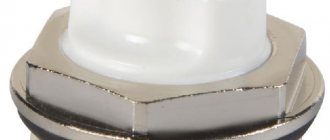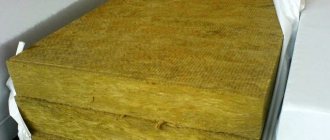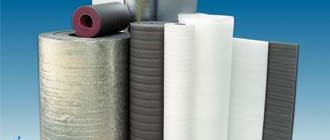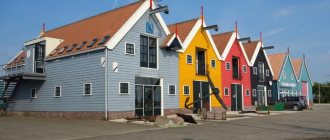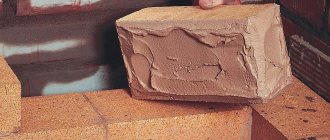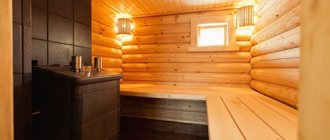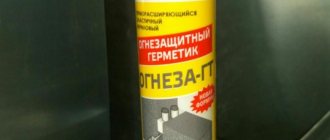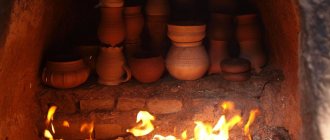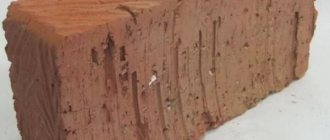Foam selection by area of use
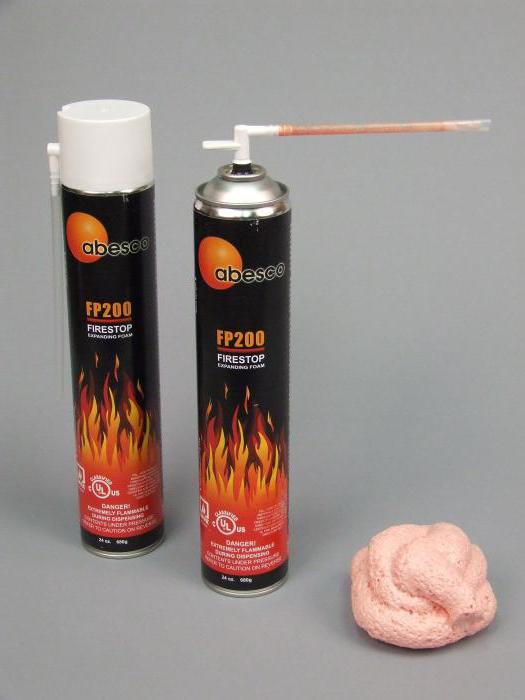
If you need professional fire-resistant foam, then you should pay attention to RUSH FIRESTOP FLEX 65. It is suitable for structures that are subject to increased fire resistance requirements during operation.
You can use SOUDAFOAM FR to seal voids. This foam can be used for:
- protection of window blocks;
- between floors and ceilings;
- to fill the voids.
This composition is universal, because it can be used where fire resistance is required. With SOUDAFOAM FR CLICK & FIX foam, you can provide not only fire protection, but also form a layer that will differ in sound and heat insulation capabilities. NULLifire FF 197 has excellent adhesion properties, which is a one-component product that can be used in tandem with most building surfaces.
Application on sites
Fire-resistant assembly foam is used to fill openings, holes, cracks, cavities in various building structures for their entire thickness; as well as for sealing joints resulting from the installation of various building parts, the installation of electrical products, engineering networks, communications communications in all cases when insulation from fire, heat and smoke of adjacent, protected in this way, premises is important.
The scope of application of fire-resistant foam is therefore very wide:
- For filling the cavities formed during the installation of door, window blocks.
- For sealing holes, openings, non-densities at the intersection of walls, ceilings, partitions with pipelines for various purposes - central, local heating, sewerage, water supply; electrical cables for lighting and communication; ventilation ducts, incl. smoke exhaust systems, air pressure; cracks around the chimneys of heating units, stoves, fireplaces in the places where they pass through building structures.
- When installing electrical switches, sockets.
- Fixation, thermal insulation of heating equipment operating on gas, liquid, solid fuels.
- When insulating the attic floors of buildings to increase the fire resistance of interfaces, structures in general.
- When roofing works on unattended types of roofs.
- Heat and sound insulation, sealing of cabins, engine compartments of motor vehicles, boats, boats, internal partitions of buildings.
- In rooms with a high air temperature, a fire hazard - in various industrial premises, in boiler rooms, baths, saunas.
This list is incomplete because fire-resistant foam can be used instead of the usual assembly foam, bearing in mind that it is not inferior to it as a sealant, but has many advantages - from incombustibility, unlike conventional material, to a wider temperature range of application, the ability to operate at low and high ambient temperatures.
Fire resistance classes
Fireproof construction products must be used in all premises that will be used by humans. The polyurethane foam has several fire resistance classes.
- IN 1 - a composition that has the highest physical and fire-extinguishing characteristics: the substance does not support combustion at all, spontaneously extinguishes after the termination of contact with fire, for a long period of time retains its properties when exposed to flame. The products are recommended for use in buildings with a large crowd of people.
- AT 2 - a material that has average flammability.Foam can release toxins when it melts, but stops burning as soon as the fire is removed from it. It can be used for rooms with an average level of traffic.
- IN 3 - a composition that is rarely used for construction work due to its flammability.
Another indicator that is assigned to products is the fire resistance coefficient. This indicator is marked as follows - EI, where the letters are followed by numerical values inherent in one or another polyurethane foam. There are the following products.
- EI 30 - a composition that retains its properties for 30 minutes. It is allowed for use inside buildings, where the fastest possible evacuation in case of fire is possible. The number of people in the building can range from 15 to 300 people.
- EI 90... Based on the data obtained during the testing of such a material, it follows that when heated to 1000 C, foam shows stability and does not lose its qualities for about 90 minutes.
- EI 120, 150 - types of polyurethane products that have the highest level of protection during a fire. The area of use of such a sealant is quite extensive. The group of premises where the use of foam is recommended includes buildings with a high level of fire hazard. With the help of such compositions, cable penetrations are sealed, the products are used for arranging furnaces, chimneys, and repairing cracks.
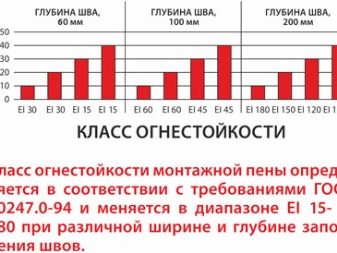

Brand overview
The modern market presents a large assortment of polyurethane foam. To be sure to choose high quality material, you should purchase a can from a well-known and trusted manufacturer.
Ogneza
Fire-resistant polyurethane foam Ogneza is produced in Russia. Some characteristics:
- Fire resistance limit - EI 240;
- Application temperature + 5 ... + 35 ° С;
- Operating temperature -40 ... -80 ° С.
Fire foam can be applied at a slight cold of at least + 5 ° С, while it is necessary to heat the cylinder itself to + 18 ° С. The sealed material can withstand 2 freeze-thaw cycles up to 90 days without losing its original characteristics.
Fire is economical: 45 liters of foam comes out of a 935 g can! Affordable price is another advantage of the presented brand.
Macroflex
Makroflex presents a large series of polyurethane foams, including the fire-resistant Makroflex FR77. It has a wide range of applications:
- Seam sealing in the construction of panel houses;
- Fixing windows and doors in openings;
- Laying and fixing heating pipes, sewerage, etc.
German developers' material has been tested in accordance with European and international standards. The brand is renowned for producing reliable building components that have stood the test of time.
The fire-resistant macroflex polyurethane foam is universal: its safety class is sufficient for use in public places, in residential apartment buildings and private houses, in industrial premises.
SOUDAFOAM FR (Soudal)
Fire-resistant polyurethane foam soudafoam fr is distinguished by an increased range of permissible temperatures in operation and a fire resistance coefficient of EI 360. This material will ensure maximum safety of the room and people in the event of a fire - the hardened foam does not support combustion and self-extinguishes after removing the fire source.
The applied foam polymerizes at a normal humidity of 60% within 2 hours at a layer of 30 mm.
The advantages of this insulator:
- High degree of protection;
- Effective consumption (from a liter cylinder, from 33 to 45 liters of foamed mass is obtained);
- High filling capacity;
- Increased adhesion to different surfaces;
- Stable layer without shrinkage and cracking;
- Available in different cylinders (with a tube or for a pistol).
DKC fire resistant polyurethane foam
A budget but practical foam insulator of an Italian brand originally from China. The material is used for instant insulation and fixation of window and door openings, electrical equipment.
Fire resistance temperature + 150 ° С. Such foam can only be used in passages with a low flow of people or in the back rooms of private houses. Operating temperature range -5 ... + 40 ° С. Suitable for indoor use only.
- Engineering Communication
- External finishing
Features of sealants for the steam room
Despite the huge offer of all kinds of sealing compounds, it is not so easy to choose a sealant for a wooden bath. Many of the products on the construction market are not suitable for a bath room, because do not meet the requirements for similar compositions.
General requirements for sealants for a bath
Criteria for choosing a sealant for a steam room:
- Ecological cleanliness and safety, the presence of natural ingredients in the composition. The product should be odorless and emit harmful substances. This is a particularly important condition for indoor sealing. At the extremely high temperatures that are present in the bath, volatile chemical compounds are released into the atmosphere and can cause serious poisoning.
- Water vapor permeability. It is necessary that the natural circulation of air is maintained in the bath, since in its absence the room will dry out poorly, which threatens the formation of mold.
- Moisture resistance. The sealant must repel moisture and protect the joints from water ingress.
- Must be heat-resistant and resistant to large temperature fluctuations.
- High elasticity. The sealant must have a stretch capability of at least 25% of its original length.
- UV resistant. This property is important for all types of sealants used outside the home.
What sealants can be used in the bath
The following products are best suited for sealing the steam room:
- Butyl rubber tape. It has good adhesion and ease of use. However, its price is quite high, and in addition, under the influence of high temperature, the material can deform.
- Thiokol sealants in the form of a paste or putty, consisting of several components and requiring dilution. To apply the composition correctly, you need to have certain skills, and mixing the ingredients is also difficult.
- Acrylic sealants. Most meet the requirements for sealants for steam rooms and saunas. They are made on the basis of an acrylic dispersion that is safe for health. They are distinguished by high elasticity, do not interfere with the air exchange of wood, and withstand high temperatures well.
What materials are undesirable to use in the steam room
It is not recommended to use silicone and polyurethane compounds for sealing the bath. Such sealants have insufficient adhesion to wood. In addition, many of them contain substances that cannot be used indoors, especially in those where there is a sharp temperature drop.
Popular brands
There are sealing materials on the market for stoves, fireplaces and chimneys. They are chosen according to their composition and temperature regime of operation. It is recommended to use products from reputable manufacturers.
Soudal
Soudal (Saudal) - a Belgian company that specializes in the manufacture of sealing compounds. Soudal stove and fireplace sealant is the Soudal series.
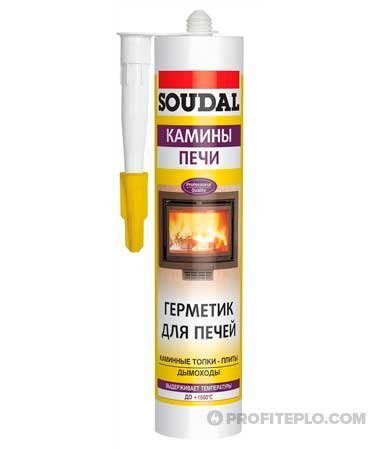

Soudal oven sealant
Calofer, black heat resistant compounds. Materials based on sodium silicate do not emit toxic substances when heated, they can be colored. Suitable for sealing cast iron elements of boiler units. One of the advantages of Belgian products is their resistance to cracking and crumbling.
Penosil
The Estonian company produces silicate paste for Penosil +1500 ovens.The material is highly heat-resistant and black in color. Penosil is cheaper than the products of the famous Belgian manufacturer, but not inferior to him in quality. This makes the Estonian sealant widely sought after by professionals and DIYers. The company's product line also includes a silicone sealant, Renosil Hight Temp, suitable for use in movable joints due to its elasticity.
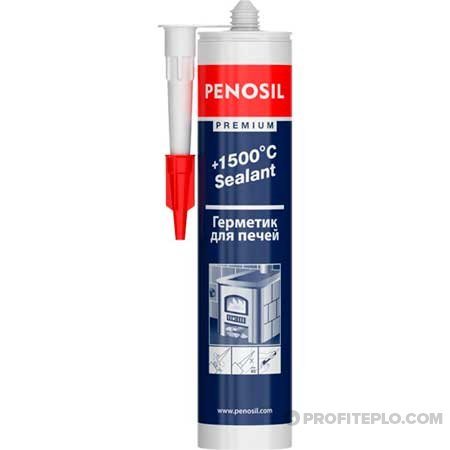

Penosil Premium Oven Sealant
Tytan
Under this brand, sealants are produced by the Selena Group - a group of Polish manufacturers of professional materials for construction and decoration. The composition of the sealing paste includes fiberglass, which provides the sealed joints with increased gas tightness. The material is designed for heating to high temperatures (1250 degrees), which makes it suitable for sealing joints and cracks in fireplace and stove masonry, for installing chimneys. Products of the Tytan brand, as well as a sealant of similar properties, which is produced under the Baumaster trademark, belongs to the middle price category. In terms of price-quality ratio, this is the best option for a wide range of consumers.
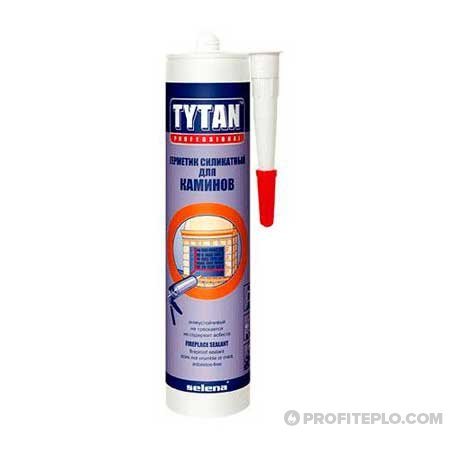

Silicate fireplace sealant Tytan
Makroflex
A well-known Estonian manufacturer of sealing materials supplies the market with refractory silicate composition Makroflex HA147. It can withstand short-term heating up to a high temperature of +1500 degrees and exposure to an open flame. The advantages of the paste of their inorganic materials include adhesion to most materials used in construction, and the absence of shrinkage during drying and under the influence of temperature fluctuations.
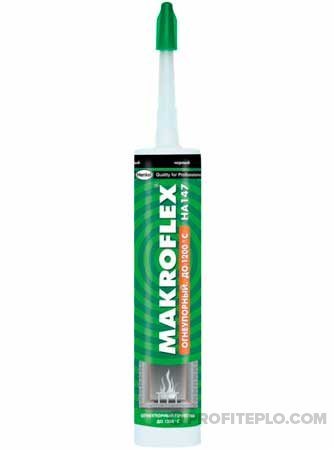

Refractory silicate sealant Makroflex
Krass
The Russian manufacturer offers refractory composition "Krass fireplaces and stoves". Using this material, fireclay masonry can be mounted in the furnace firebox, fire retardant masonry. The composition withstands a sharp increase in temperature, is not afraid of open fire, is suitable for repairing brick stoves and fireplaces, as well as heating boilers. It is a non-shrinking material made on the basis of liquid glass. Easy to apply due to its pasty consistency.
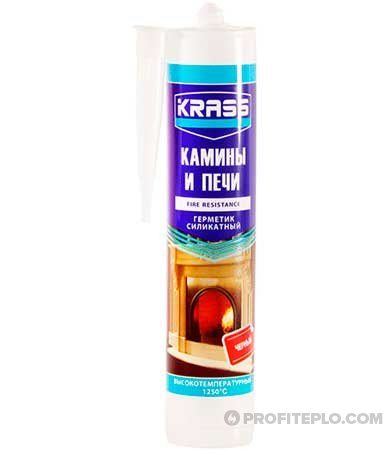

High-temperature silicate sealant Krass
Types of fire-resistant polyurethane foam
- Main application - all foams are divided into two classes regarding resistance to negative temperatures. There is a fireproofing winter polyurethane foam - it can be applied even if it is -5 -10 ° C indoors or outdoors. For maximum adhesion of the conventional compound, the temperature should not be lower than + 5 ° C.
- Fire resistance - according to GOST, for most premises with a high concentration of visitors, it is necessary to use class B1 class polyurethane polyurethane foam. Additionally, depending on the technical characteristics of the building, you should choose a sealant with the required fire resistance index, EI marking.
- The number of active ingredients. Fireproof sealant can be of two types.
- One-component formulations solidify under the influence of moisture. It is recommended to wet the surface to be filled before applying one-component foam for better adhesion.
- Two-component foam does not harden due to external factors, but due to the chemical composition containing the required reagent. It is the two-component composition that is designed to work in winter, at negative temperatures.
- EI 30 - the application is limited to rooms with a congestion of 15 to 300 visitors, subject to the possibility of quick evacuation. The foam retains its properties for 30 minutes.
- EI 60, EI 90 - the test of foam with a fire resistance coefficient of EI 90 shows that for 90 minutes, when heated to 1000 degrees, it can withstand the heat load while maintaining all the basic parameters.Depending on the technical characteristics of the premises, it can be used in buildings with a high concentration of visitors, shopping centers, etc. This figure is slightly lower for a sealant with an EI 60 - which is equal to 60 minutes.
- EI 120, EI 150 - maximum protection during fire. Scope of application - premises with high flammability, creation of fire belts and dividing partitions, sealing of cable passages, etc.
Feature material
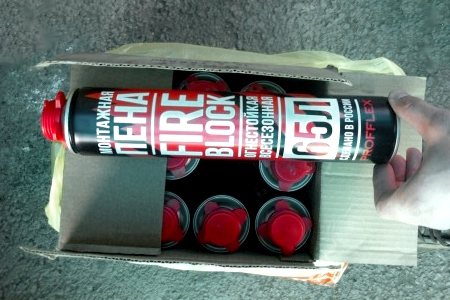

Polyurethane foam is a sealant that increases its volume after application. As the substance hardens, it takes on a rigid shape, this allows you to fix and hold in place door blocks, insulation, window blocks. It is based on polyurethane foam, the fire resistance of the polyurethane foam is provided by special additives of fire retardants.
The main purpose of non-combustible foam is for use in rooms subject to periodic or constant heating, exposure to local heat sources:
- in workshops;
- in steam rooms and a bath, in a sauna;
- in treatment rooms;
- in factories;
- in entertainment establishments, etc.
Materials are divided into 2 groups according to seasonality:
- Winter ones are applied and hardened at a temperature of -5 ... -10 ° С.
- Summer is used under normal conditions at + 5 ° C and above.
What it is
Providing fire safety is the main task that is put before the builders during the construction of structures. Fire-resistant construction products everywhere displace materials that melt easily and emit toxic substances during thermal exposure. Fire-fighting polyurethane foam has a specific feature that distinguishes it from conventional products - the composition is resistant to exposure to open fire.
Foam has a specific classification with respect to its flammability level, which depends on the manufacturer, brand and modification. Refractory foam is a relatively new material on the construction market. Products do not run down when applied to vertical substrates. In addition, the composition fills cavities qualitatively.
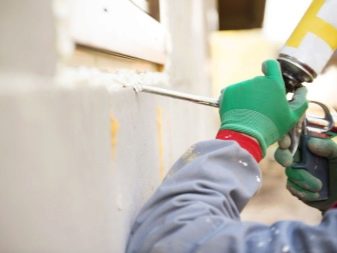

Among the features of the material, it is worth highlighting a good level of adhesion to bricks, metal substrates, wood, various polymers, glass and cement. The product is essentially a one-component or two-component sealant based on polyurethane. The composition is implemented already completely ready for use. Immediately after application of the foam, the components of the product polymerize upon contact with moisture in the air.
Among the main components of the polyurethane foam there are substances that provide products with unique characteristics in terms of heat resistance, as well as impermeability to smoke and gas.
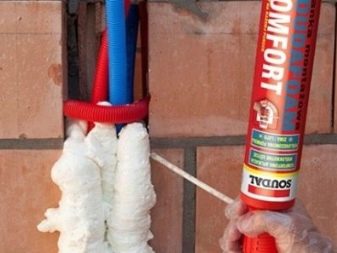

It is necessary to highlight the main technical characteristics of the composition.
- The products are resistant to moisture, as well as the development of mold and mildew on the substrate.
- The foam is resistant to temperature fluctuations in the range from +1000 C to -60 C. The available additives enable the material not to lose its strength and elasticity.
- Based on the type of product, the time interval varies during which the product retains its resistance to elevated temperatures and does not ignite.
- Self-extinguishing flammability is inherent in foam. Upon contact with a fire source, the substance does not drain from the base, and during the termination of contact with fire, the material itself extinguishes.
- The products have sound insulating qualities - the limit for most compositions is about 41 dB.
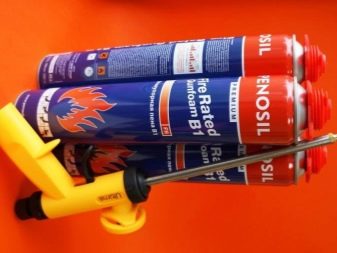

The disadvantages of fire-resistant polyurethane foam include its sensitivity to ultraviolet radiation. Therefore, it is necessary to provide the product with an appropriate level of protection.
Modern materials for sealing heating units
Fireplace and stove sealant is a polymer material similar in structure to a paste. It can be one-component or two-component.One-component adhesive sealant is usually packaged in tubes for an assembly gun, this is the most convenient option for work. The two-component material is used only by professionals, since errors are not allowed when mixing the composition - you need skill to properly prepare the working material.
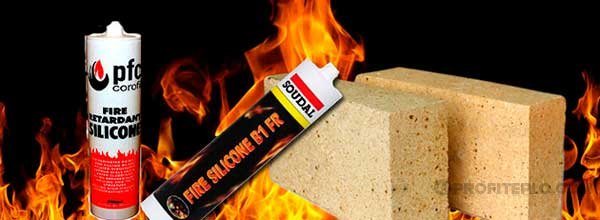

High Temperature Oven Sealant
For the installation and repair of stoves, fireplaces and heating boilers, special high-temperature compositions, according to the scope and material of manufacture, they are divided into two types
:
- Heat resistant sealants. Designed for areas where heating does not exceed 350 ° C. Suitable for sealing cracks and joints in the outer masonry of stoves and fireplaces (but not in places of contact with molding!), For sealing chimneys made of bricks and sandwich pipes. For a single metal chimney, a heat-resistant composition is allowed to be used only if it is a chimney of a pyrolysis or condensing boiler - in this case, the temperature of the exhaust gases does not exceed 150 ° C.
- Heat-resistant and fire-resistant sealants. The high-temperature sealant is designed for use inside the combustion chamber, at the points of contact between the masonry and the casting. It is used to seal any chimneys, including for the joint with the outlet of the furnace. Flame retardant sealant is a type of heat resistant sealant that can withstand direct contact with a flame. Not all heat-resistant compounds are fire-resistant (fireproof), when buying, pay attention to the labels on the packaging.
It is necessary to choose an assembly and repair composition for boilers and furnaces taking into account the temperature regime of the zone where they will be used. By composition, sealants are divided into silicone and silicate.
Heat-resistant compounds
Thermosealant is a silicone-based material. Due to the introduction of iron oxide into the composition, the material has a reddish-brown tint. Manufacturers offer silicone sealants with different temperature thresholds, specific data are indicated on the packaging.
Note! High-temperature silicone sealant, which is produced in ordinary tubes and is actively used by motorists, cannot be used to repair stoves and chimneys. This material is acid-based and incompatible with grout and corrosive metals. The acid released during solidification reacts with materials to form salts or oxides. The formed brittle layer is destroyed and the seam loses its tightness.
The neutral heat-resistant silicone sealant is compatible with all materials and dries to release alcohols and water.
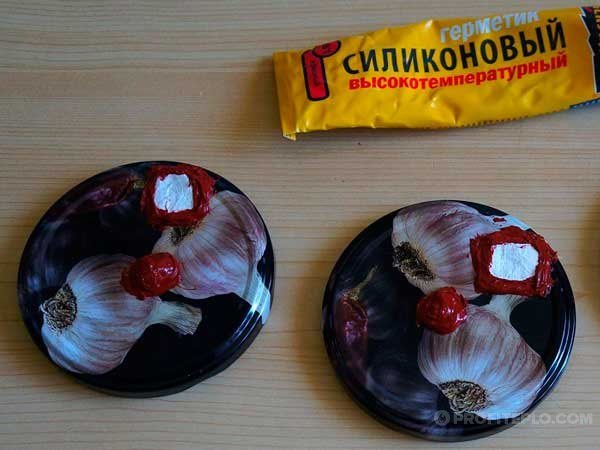

High temperature silicone sealant
Its advantages include
:
- resistance to UV radiation - the material is suitable for sealing cracks on the outer part of the chimney, joints of roof penetrations;
- hydrophobicity - due to its watertightness, it is used to seal the joints of penetrations to the waterproofing of the roof;
- high adhesion with materials of different structure, including brick, cement, metal;
- preservation of elasticity after drying - the tightness of the connection will not be disturbed by small vibrations.
Attention! High-temperature silicone is versatile in use - it is successfully used to seal threaded connections when installing heating circuits.
Work with a heat-resistant composition
Heat-resistant sealant for stoves and fireplaces is applied to a clean, degreased surface. If the material was moistened during cleaning, wait until it is completely dry. It is recommended to sand the metal surface with sandpaper so that the applied composition is held stronger.
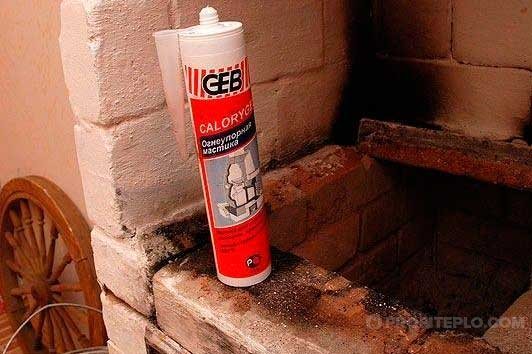

Furnace preparation before coating with sealant
Silicone paste needs air to cure. Therefore, the thickness of the joint must not exceed the values specified by the manufacturer.
The curing rate is a parameter calculated for the use of a silicone compound at a temperature of about 23 degrees and a humidity of about 50%. Under real conditions, the polymerization rate can be higher or lower than indicated. At low temperatures, the paste hardens more slowly.
Due to the elasticity of the material, it cannot be stained - the dried paint crumbles from it. Silicone pastes for stoves and chimneys are red or brown in color. Transparent silicone-based materials must not be used!
Heat-resistant formulations
The heat-resistant sealant is a silicate-based sealing paste. In normal operating mode, such material can withstand heating up to 1300 degrees, with short-term exposure - up to 1600 degrees. Refractory sealant is a kind of heat-resistant sealant that is not afraid of contact with fire.
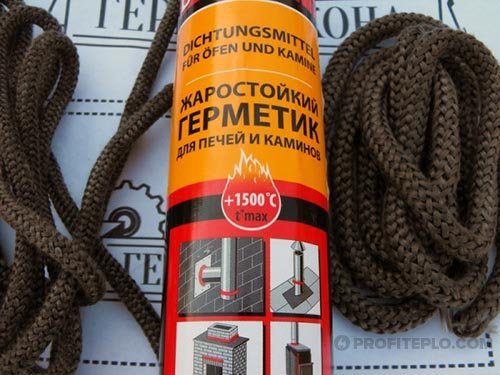

Heat-resistant sealant for stoves and fireplaces
Silicate pastes are intended for the installation of fireclay masonry in the furnace, for the treatment of casting installation sites, for the repair of heating boilers (elimination of leaks). The same composition is suitable for the installation of metal single-wall furnace pipes and sandwiches - they are glued to the joints of the modules, fistulas are closed.
Work with a heat-resistant composition
The heat-resistant composition has high adhesion to bricks and cement. It adheres well to metal if the surface is pre-treated with an abrasive material and degreased. Before applying the silicate composition, a brick or other porous material is dedusted, degreased and necessarily moistened with water - this is the main difference between the technology and the use of silicone heat-resistant material.
Repair and installation work using silicate paste is allowed only at positive temperatures (from +5 to +40 degrees). But at temperatures below +20 degrees, the composition dries longer than the period specified by the manufacturer. Excess composition is immediately removed with a damp cloth so that you do not have to scrape off the dried paste from the masonry surface. The thickness of the seam must correspond to the parameters specified in the instructions for use, otherwise the material will not gain the required strength and crack.
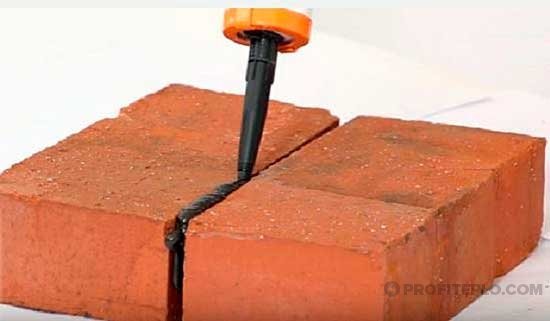

Filling the joint between bricks with heat-resistant sealant
Heat-resistant oven masonry sealant is inelastic and should not be used where the joint is subject to deformation and vibration. Under such influence, the dried composition will crumble. At the same time, the inelasticity of the material allows it to be painted in any chosen color. The paste itself is gray or black. When working with it, it is required to use protective gloves, since the sealant can cause a chemical burn if it comes into contact with the skin.
The silicate composition makes it possible to mount a collapsible chimney - metal pipes are "planted" on the oven sealant, while only the joint itself is processed. If it is necessary to disassemble the structure, it is enough to loosen the connection - the dried paste will crumble.
Note! When using oven sealant, it is important to follow the manufacturer's directions. Some silicate formulations require drying for several hours, changing the rate of combustion of the fuel. The drying mode is detailed on the package.
Silicate paste is used to fill the joints in the masonry of stoves and fireplaces. In order not to spoil the appearance of the stove without lining, carefully seal the bricks with masking tape before grouting. The expenditure of time and effort will pay off with the aesthetic appearance of the masonry.
Professional sealing services for wooden houses
offers its services for the insulation of houses from a bar and logs located in Moscow, the Moscow region and adjacent regions.
We are official dealers of manufacturers producing premium sealants Remmers, Ramsauer, Oliva and others. Thanks to this, our customers can order sealing with branded products on favorable terms.
In our company, the main focus is on the quality of the services provided.We carry out a triple quality control of the work performed. Masters undergo regular training and professional development.
To contact us, go to the "Contacts" page, there you will find our coordinates and the application form.
Calculate the cost of painting and insulating your home right now
To date, the scope of application of classic fire-resistant foam has increased significantly, from now on it is used not only for the construction of window and door openings or for sealing cracks, but also as a "bridge" in places where a high temperature is expected, and this may even be a chimney. Often these are stoves or chimneys, where the temperature regime, as a rule, is constantly on the verge and as insulation, using modern means and components is much more efficient and safer. In principle, there are no common characteristics between the varieties, as such, but there are significant differences in the level of fire resistance, which we will get to know a little later. In addition, we will study the features of choosing a refractory foam for a chimney.
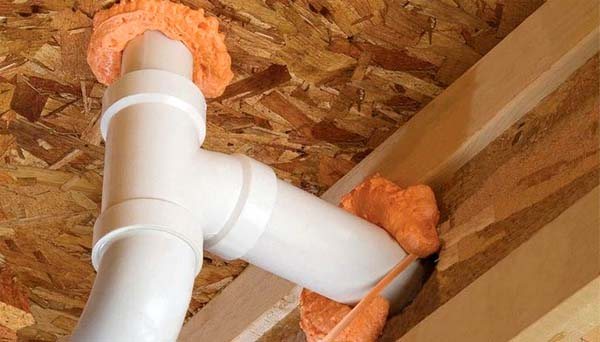

Selection features
When choosing components for construction, one should proceed from the practice of focusing not on cost, but on the specific characteristics of the product itself. In addition, pay attention to the type of chimney itself, for example, products suitable for brick shafts will not be successful for metal or combined channels. To choose a polyurethane foam, you need to distinguish between the following product features:
- Resistant to moisture and mold and other side effects.
- Ability to withstand significant temperature fluctuations, in the range from -60 to +150 degrees.
- If we take the sealant as a basis for comparison, then the refractory foam has significantly higher qualities of reliability and strength.
- Properties imply delayed combustion.
- Self-extinguishing. That is, the material was used in such a classification that, when direct fire hits, it will not drain off with burning drops, but, on the contrary, will gradually fade out.
- But, do not forget that foams, and even of such characteristics as we are considering today, are quite demanding on the sun's rays, keep in mind when processing in open space.
Features of the use of heat-resistant sealant
Black fireplace and stove sealant adheres well to rough surfaces (brick, cement). But on smooth metal the adhesion will be insufficient. Therefore, before applying this composition, you need to sand the surface with sandpaper. After that, the metal is degreased. In this case, the sealant will firmly adhere to the surface. Before starting work, other porous materials must be dedusted and moistened with water.
Surfaces can be treated with heat-resistant paste at temperatures from +5 to +40 ºС. The lower it is, the slower the drying process takes place. If it turns out to apply more sealant than necessary, wipe it off with a damp cloth. The seam thickness is indicated by the manufacturer on the packaging. Usually this figure does not exceed 15 mm.
The black oven sealant should not be used in areas that may be deformed or vibrated. The material is absolutely inelastic. Therefore, under the influence of such factors, it will simply crack. After drying, the composition can be coated with a layer of special heat-resistant paint. Work when using this sealant is carried out with gloves. If it comes into contact with the skin, traces of chemical burns may remain.
What is the best foam to choose, a choice in terms of cost?
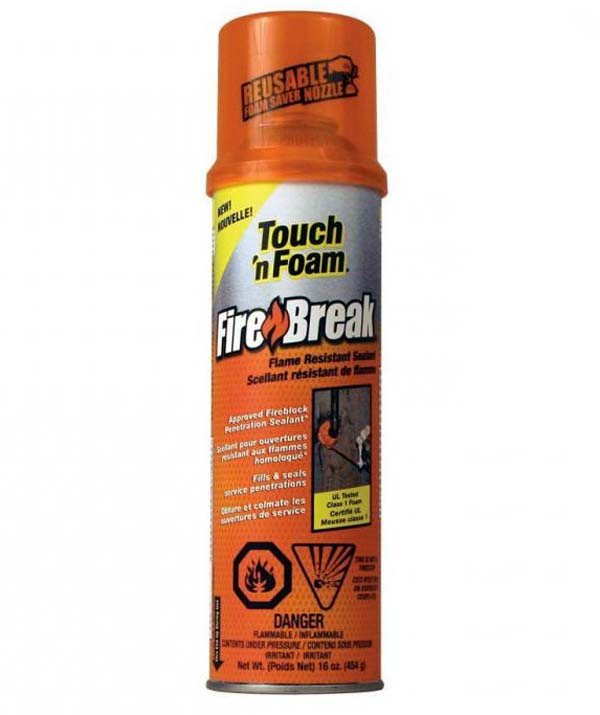

Heat-resistant characteristics partly affect the cost, as a rule, if we take the average cost on the market, then one bottle will cost 400 rubles. subject to standard volume. Purchase orientation should be directed to the number of minutes of curing, as well as the characteristics of the level of fire resistance. But, remember that the price may well overcome the mark of 500 - 600 rubles. After all, this is partially influenced by the manufacturer and his brand.It is possible to use heat-resistant polyurethane foam and cheaper, as a rule, now there are few who are engaged in fakes, with this price range it is not cost-effective.
Consumption
The manufacturer indicates the approximate consumption of the foam mass on the package. Usually 1L. sealant expands up to 30–45 liters. An average of 10 liters per sq.m. sealant with a seam depth of 35–40 mm. But these numbers are very arbitrary, since the following factors affect the expansion:
- Application temperature. The lower the temperature, the less expansion.
- Winter fire retardant materials expand less.
- Application method. The assembly gun gives a more economical consumption.
- Work experience. With insufficient dexterity, the flow rate can increase by 2–3 times.
When buying a self-application mixture, take a small supply. Optimal working conditions: temperature +18 - + 22˚С, humidity 75%.
In addition to the manufacturer's recommendations, you can use an online calculator on the Internet for an approximate calculation of consumption.
The choice of foam for fire resistance
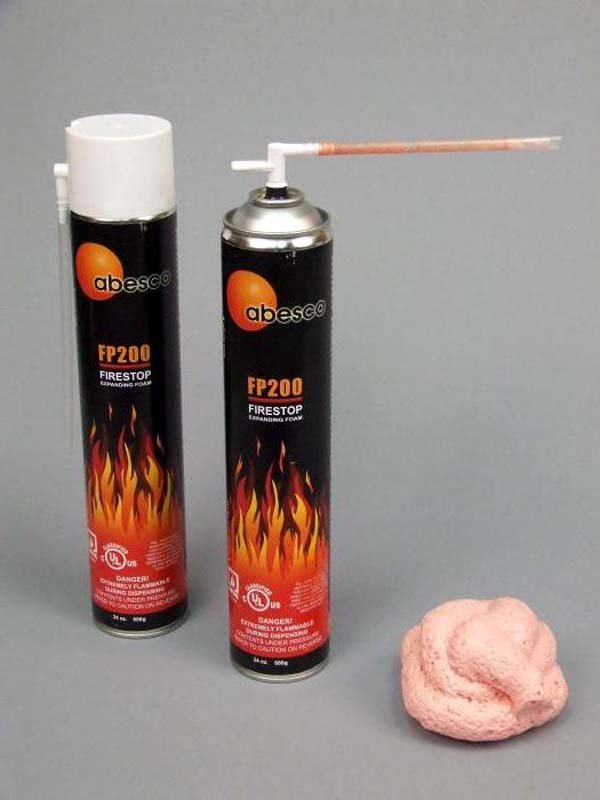

When choosing a polyurethane foam, focus on the so-called coefficient, it indicates the level of fire resistance. On the tube itself, you can find not only the basic methods for application, but also the characteristics, but also the level of fire resistance. EI marking, so:
- A value of 30 means there is a restriction on indoor use where there are 16 to 299 people. This is subject to a possible evacuation. In this case, the properties are retained for 30 minutes.
- 60 and 90 means that when heated to 1000 degrees, the properties are preserved, and it is able to withstand the load. It is allowed to use in shopping centers and large stores.
- 120 and 150 are the maximum levels, they are best used to create "belts of fire" for chimneys and boilers. Chimney seams can also be done using this category.
Heat-resistant composition
Heat-resistant compositions are made on the basis of sodium silicate. They are able to withstand temperatures of about 1300 ºС for a long time. Silicate sealant for fireplaces and stoves can also be exposed to short-term heating up to 1600 ° C. Such pastes are black. Sometimes the mass can be gray.
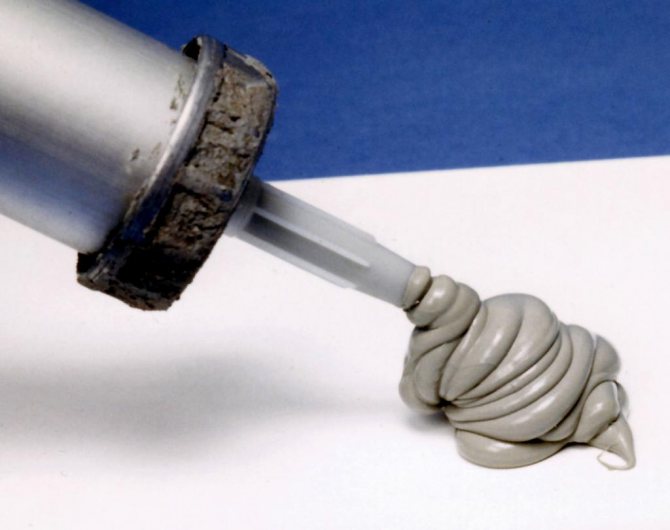

After hardening, the paste forms an inelastic solid layer. There are heat-resistant sealants on sale, which are also sold in tubes for a construction gun. Such compounds do not adhere well to smooth surfaces. They are not used to process stainless steel chimney joints.
Foam selection by area of use
Heat-resistant foam should also be divided according to the scope of application, distinguishing several main factors that were listed in the subparagraph above. So, keep in mind when working in these areas and refer to the classification above.
- For filling joints in fire barriers.
- For reliable sealing of window and door blocks, including for protection from fire and smoke.
- Sealing gaps in chimneys.
- As an adhesive base for insulation and insulation.
- For thermal insulation in chimneys, ventilation and air conditioning systems.
Application area
Fireplace and stove sealant is a synthetic compound that is similar in structure to a paste. One- and two-component formulations are on sale. The first of the named materials is packaged in tubes intended for the assembly gun. In professional activities, two-component formulations are used. They are mixed in a certain ratio. Such compositions are used for large-scale work.
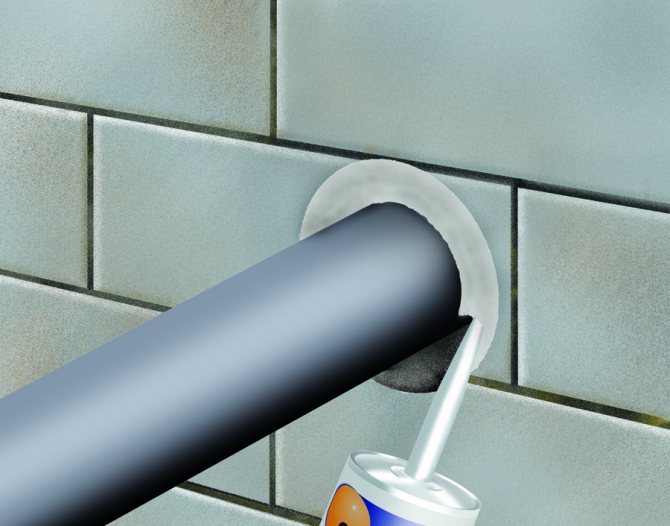

The presented type of sealants has several areas of application. Most often, a similar composition is acquired by the owners of private houses to seal holes, cracks in brick or metal (welded) combustion chambers of fireplaces or stoves.
In addition, such a composition can be used in the process of installing or repairing stove pipes, as well as in the external decoration of fireplaces and brick stoves. If fire-resistant gaskets, such as asbestos cord, need to be glued to metal fittings, a sealant is also used. It securely fixes heat-resistant material to valves, doors, and iron and cast iron plates.
The heat-resistant sealant is also waterproof. Therefore, it is used for the purpose of waterproofing the junctions of the chimney to the roofing materials. It is worth noting that the pipes must be made of either brick or metal.
Chimney crack sealing - fire resistant foam
Not everyone got houses that were built according to their own projects, taking into account all the fire safety rules in the heating system. Many houses have been inherited or bought, already built, where they have to remodel and monitor the chimney system.
Why is it a chimney system, but if the chimney is offset and when installing several stoves, basically the chimneys from them converge into one central pipe. At the same time, part of the horizontal pipes, from the outlet of the stove chimney to the central chimney, which is popularly nicknamed the "boar", undergoes the greatest temperature changes, humidity and subsidence of structures - therefore, it often cracks.
Cracks can be quite decent up to one and a half centimeters, which creates a danger of fire in the attic floor. In some regions, such chimneys are prohibited by firefighters, but in Belarus they are available, especially in village houses.
It is extremely difficult to close a crack if the chimney, due to temperature changes and due to its incorrect installation, constantly shifts during the heating season and summer, is extremely difficult, since fragile refractory materials are used: clay, putties, plasters.
Features of the use of heat-resistant sealant
Heat-resistant and heat-resistant sealant for fireplaces and stoves differ slightly in application requirements. For silicone formulations, degrease the surface before application. It is worth noting that it must be completely dry. The metal is pretreated with sandpaper. So the composition will better adhere to the surface.
Sufficient air must be supplied to the heat-resistant sealant to cure. The seam thickness should not exceed the manufacturer's standard.
The paste hardens within a certain period of time (specified by the manufacturer). This process can be faster or slower. This is influenced by the level of temperature and humidity. If the surroundings are damp and cold, curing will take place more slowly. It should be noted that the sealant is elastic. Therefore, it cannot be dyed.
Scope of application and characteristics of foam assembly fire-resistant
At the same time, the use of elastic materials based on rubber, bitumen is difficult, since they do not withstand high temperatures and can ignite.
It is in this case that construction, fire-resistant polyurethane foam is most suitable, which, due to its elasticity, can seal moving cracks, compensating for the displacement of the horizontal chimney structure.
Produced heat-resistant polyurethane foams do not belong to the category of completely non-combustible, so it can be used only away from the firebox. So, for example, in the upper masonry of the chimney, namely, where it goes into a horizontal position. The appearance of an open fire there is excluded, but if this happens, then this phenomenon will be short-lived.
I would like to say right away that all foam, although it is considered fire-resistant, but according to various classifications, to the most non-combustible class EN 13501-2: 205 - the fire resistance of the material reaches 240 minutes, you are unlikely to find foam.
The refractory class will be indicated on the cylinder: B1 - fire-resistant or B2 - combustible but capable of extinguishing.
Other articles on this topic:
blog comments powered by
Heat-resistant composition
Heat-resistant sealant for stoves and fireplaces is made on a silicone base. It also contains iron oxide. Because of this, the sealant has a reddish tint. Compositions of this group are on sale, which differ in temperature threshold. Therefore, before buying, you need to pay attention to this. It is also worth noting that high temperature automotive sealant is not suitable for furnaces and chimneys. Such a composition is incompatible with the cement mortar of the masonry, as well as with the metal.
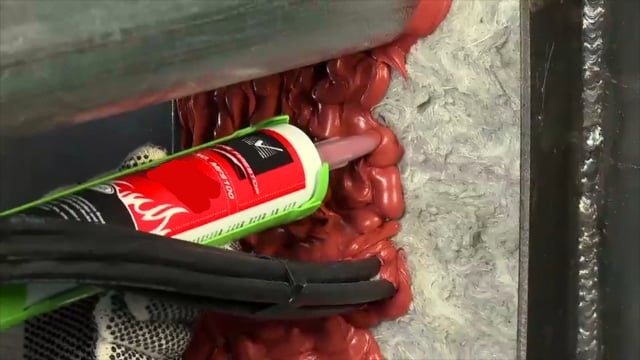

Furnace heat-resistant sealant releases water and alcohols when dry, and automotive compound releases acid. Therefore, only special materials are compatible with oven surfaces.
The heat-resistant sealant is not subject to the negative effects of ultraviolet radiation, therefore it is also used for decorating open-air ovens. It repels water. This allows the use of a sealant for the chimney passage through the roof waterproofing. It adheres well to brick, metal, cement surfaces. After drying, the layer remains elastic.
Refractory polyurethane foam, question.
AlexKa
03-10-2017 14:31
Yesterday in the construction store I saw this very foam. The question arose, can anyone come across or did, whether it is possible with this very foam to foam the space around the pipe together with the exit of the latter from the roof. For there are cracks through which it blows. The foam is likely to touch the pipe. The outlet pipe is ordinary, not a sandwich. Thank you in advance for your consultation. I ask you not to send it to Google. Was. I did not find a clear answer to the question. As usual there is a lot of garbage and water ...
Abar
03-10-2017 14:45
I have this foam, only in the attic, where the pipe comes out of the ceiling, but the foam comes into contact with the pipe. The pipe is a sandwich. At the exit from the roof there is a master flash, such a special elastic band.
AlexKa
03-10-2017 15:07
The elastic is worth it. Set on fire resistant sealant. A tree has been selected with a margin around the pipe. The metal remained. Somewhere from the joints and siphon. But the pipe coming out of the roof is ordinary. Next is a sandwich. When I was collecting one knee was missing, I put it temporarily
.
Abar
03-10-2017 16:01
It is not very clear, it is possible in more detail. Foam is possible if there is no hot iron there.
AlexKa
03-10-2017 16:45
Actually here. It was made clumsy because it was temporary because it was planned to block the roof and bring out a sandwich through the roof. Plans have changed and remained as it is. There are gaps in the roofing sheet on the sides of the pipe. It blows from there. If it's just that the wind is not particularly senior, but when the stove is heated, it happens that it draws in the smoke. Well, sometimes it leaks during a downpour, but rarely. So I wanted to foam everything around the pipe. Today I will heat and feel the pipe. Is it getting very hot. The sandwich, of course, doesn't get hot ...
Abar
03-10-2017 16:49
If the temperature is not high, you can pour silicone, but the foam, will it hold water?
AlexKa
03-10-2017 16:52
Masterflash is set on a temperature-resistant sealant. There is no problem. Slots on the sides, one decent. Zadolbaeshsya pour sealant. Yes, and do not carry a pistol to crawl.
Abar
03-10-2017 17:12
I also had a problem with the flush, water flowed under it and flowed straight along the pipe to the stove. As a result, another sheet of metal was placed on top of the ridge overlapping the flush, and the entire flush was removed and placed entirely on silicone. I had to do it naturally from the roof, there was no other way. In your case, you can plant it on a refractory sealant. You will not get bogged down there, you just have to climb onto the roof and not everyone can do that. If you fill it with foam from the inside, then the water may leak over time. It may stop blowing, although I don't really understand, well, it blows and blows, you don't seem to have an attic? Or is it not the attic in the photo?
AlexKa
03-10-2017 17:24
In the photo there is an attic. Under it is an attic. What is blowing in general is FSUs, but when a strong wind draws smoke from the chimney into the gap. And through the cracks pulls into the room. The house is old, frame. Outside, the flash is planted on a sealant and attracted by roofing screws. Despite the fact that the iron is not smooth, nothing flows under the flush. The pipe is also coated with sealant. Of course, all this was done outside. The roofing sheets are short, the roof is made up of them. Here in the area of the pipe there are cracks in the roof itself. Self-tapping screws attracted but not much sense.There is generally some kind of wild iron sandwich heaped up ... In general, it is difficult to explain on the fingers. A competent pipe is necessary.
Refractory foams for ovens
Dismantle. Disassemble the roof. Cut a smoother hole. The roof, in this place, should be re-covered. Drive a sheet with an oval under the ridge. Through it, put a pipe and a new master flush on the sealant, plus the master flush can also be pulled on top with a clamp. But it is troublesome and, kmk, unreasonably laborious. Well, it's not a problem to climb on the lynch.
Abar
03-10-2017 17: 48quote:
Here in the area of the pipe there are cracks in the roof itself.
So are the gaps in the roof or between the pipe and the roof? I still do not understand where is it blowing? If, as you say, the sandwich is sealed and sits tightly on a sealant with self-tapping screws, it is smeared on the pipe with a refractory gemstone, then where does the smoke go? Can't you just deliver a sandwich? Doesn't this solve the problem?
AlexKa
03-10-2017 18:07

